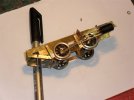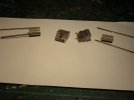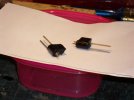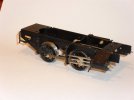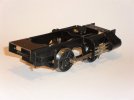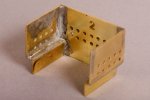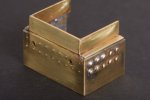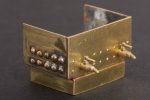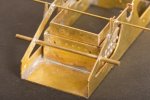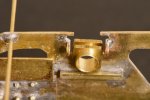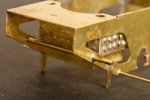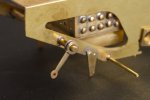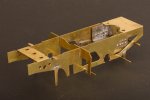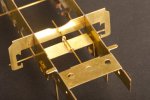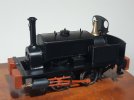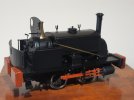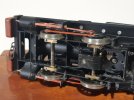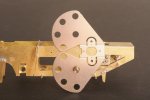* model of 'Sankey' built by Allen (unpowered) *
Hello Richard
I built one about 3 years ago as Sankey on the Edge Hill Railway (1 of the Colonel Stephens lines).
The loco as a whole was as the kits but buffers, normal & center dumb, and brakes where changed to suit.
One point I would advise. The cylinders have two little tags on them which fit through holes on the frames for soldering (gluing) on. I drilled a third hole for a small screw, 10BA or may have been 8BA. This was fixed to the casting before the whole assembly was built. Jus be careful the dead does not catch the piston rod. Everything can now be built & painted the cylinder assemblies attached with (bit of a fiddle) nuts.
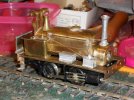
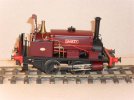
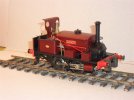
Hope this is of help
Regards
Allen
I built one about 3 years ago as Sankey on the Edge Hill Railway (1 of the Colonel Stephens lines).
The loco as a whole was as the kits but buffers, normal & center dumb, and brakes where changed to suit.
One point I would advise. The cylinders have two little tags on them which fit through holes on the frames for soldering (gluing) on. I drilled a third hole for a small screw, 10BA or may have been 8BA. This was fixed to the casting before the whole assembly was built. Jus be careful the dead does not catch the piston rod. Everything can now be built & painted the cylinder assemblies attached with (bit of a fiddle) nuts.



Hope this is of help
Regards
Allen



